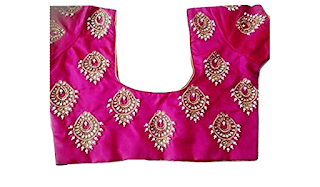Dressing to Impress: Unveiling the Hidden Expenses of Your Wardrobe
Introduction
When it comes to our wardrobes, we often focus on individual pieces of clothing, trying to find the perfect shirt or pair of jeans. But have you ever stopped to consider the total cost of a wardrobe? From the initial investment to ongoing maintenance and replacement, there are many factors to take into account. In this article, we will explore the various costs associated with building and maintaining a wardrobe and provide practical tips on how to minimize expenses while still looking your best.
The Initial Investment: Buying Quality Pieces
Investing in high-quality clothing may come with a higher price tag upfront, but it can save you money in the long run. Cheaply made items often wear out quickly, leading to frequent replacements. On the other hand, well-crafted garments are built to last, allowing you to wear them for years without significant signs of wear and tear. So, when it comes to essentials like a tailored suit or a classic little black dress, it's worth splurging and investing in items that will stand the test of time.
Ongoing Maintenance: Cleaning and Care
Once you have a wardrobe full of quality items, it's crucial to take care of them properly to ensure their longevity. Regular cleaning, whether through dry cleaning or proper at-home care, is essential. Neglecting to clean clothing regularly can lead to stains that are difficult to remove, resulting in the need to replace items prematurely. By staying on top of maintenance and following care instructions, you can extend the life of your clothing, reducing the overall costs associated with your wardrobe.
Staying in Style: Trendy vs. Timeless
Another factor to consider when calculating the total cost of a wardrobe is the balance between trendy and timeless pieces. While it's fun to stay current with the latest fashion trends, constantly updating your wardrobe can be costly. This is where investing in timeless, versatile pieces comes into play. Classic staples like a well-fitting white button-up shirt, a tailored blazer, and a little black dress never go out of style. By mixing in a few trendy pieces and focusing on timeless basics, you can create a wardrobe that stands the test of time without breaking the bank.
Replacement and Revamping: Updating Your Wardrobe
Over time, clothing can wear out, go out of style, or simply no longer fit properly. This is where the cost of replacing outdated or worn-out items comes in. However, there are ways to minimize the expense. Consider exploring local thrift stores or online secondhand marketplaces for budget-friendly options. Additionally, revamping items in your wardrobe can give them new life. Tailoring ill-fitting clothes or adding accessories can help refresh your look without having to spend a fortune on new pieces.
The True Cost: Calculating Your Spending Habits
To truly understand the total cost of your wardrobe, it's important to assess and analyze your spending habits. Take a closer look at your shopping patterns over a specific period and tally up the expenses. This exercise can provide valuable insights into where you may be overspending or areas where you can cut back. Understanding the true cost of your wardrobe allows you to make informed decisions about future purchases, helping you save money in the long run.
Conclusion
Building and maintaining a wardrobe is an ongoing investment. By considering the initial investment, ongoing maintenance, staying in style, replacement and revamping, and evaluating your spending habits, you can better understand the total cost of a wardrobe. Remember, quality pieces, proper care, timeless basics, and mindful shopping can help minimize expenses while still allowing you to express your personal style. So, next time you're eyeing that new dress or pair of shoes, take a moment to think about the bigger picture and make informed choices that align with both your budget and fashion sense.



Comments
Post a Comment